If you’re more interested in big game that offers more of a challenge, then you might want to try moose hunting. There’s much more preparation involved, and you may have a harder time finding a target and taking it down, but you’ll feel accomplished by the end. Moose are extremely large creatures, and being able to best them in their environment can offer up a challenge even to the most seasoned of hunters.
[the_ad_placement id=”in-text-1-type-r”]If you’re just starting to get interested in taking on larger game, then you’re going to need these moose hunting tips on your side to stay safe as well as making your experience easier and much more enjoyable. Many people think that because these animals are so big that they can just drive around and find one, but they’re actually much harder to locate. By keeping these tips handy, you can increase your chances of finding a moose and scoring a great kill.
The best times to hunt
Like many animals, moose populations will thrive during certain seasons and they will make themselves easier to find. The best times to find moose are during the rutting season, when they come out to mate. On average, this occurs during the first two weeks of October; it can be earlier the farther north you are, and later the more south you are.
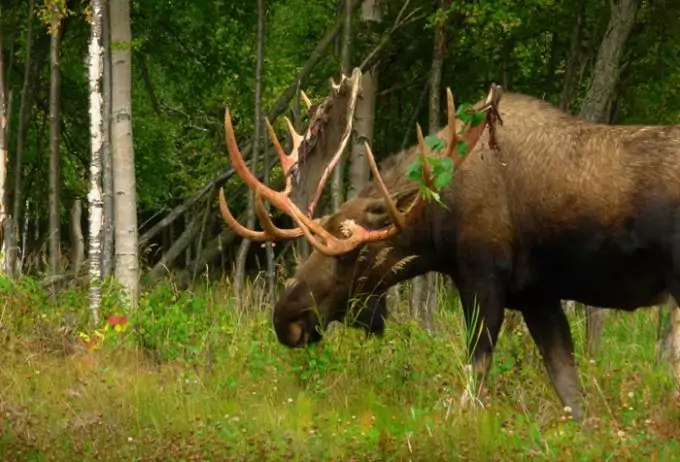
If left undisturbed, the moose return to the same area year after year. If you do start moose hunting late into the rutting season, then you’re going to have to search deeper into the forests to find them; females tend to be near open bodies of water during this season to attract the males, so if you don’t spot any in these areas, you’re a little too late.
Some tips to keep in mind
When you’re just starting, there are some important tips to keep in mind when searching for moose. These tips should be kept with you on each venture you take, as consistency is the key to help you with your moose hunting.
- When you’re on the hunt for moose, focus your search to one area. Venturing around will only alert them more to your presence and you’re likely not to find any at all. Remaining in one place will increase your chances of the creatures coming by. Concentrate your search on bodies of water and their food sources. Don’t hunt near roads or areas of traffic, and stay away from other hunters. The higher body count is more likely to alert them to your position.
- Use the wind to your advantage as much as you can. You want to stay downwind of them so that they don’t catch your scent; being downwind means that the wind is blowing towards your face and away from the moose. It might even be useful to bring a wind indicator with you so that you can tell which way the air is going. This is usually a small container of scentless powder that helps you see which way the wind is blowing.
- When you’re setting up camp, stay away from the areas where they’re most likely to be, such as by ponds and lakes, and food sources. Your smell and the noise you make will chase them away, decreasing your chances of finding them.
- Learn the differences between fresh and stale moose signs. Stale ones will only lead to a dead end, as well as waste your time and energy. In the summer, moose scat tends to look like cow patties, while in winter, they look like pellets. Seeing either during the appropriate months will let you know if there’s one nearby.
- If you spot a moose just before or after dark, don’t bother pursuing them. The best thing that you can do is to leave the area quietly and return early the next morning. If it hasn’t spotted you, it’s likely to still be in the same area the next day.
- It never hurts to do some preseason scouting beforehand so that you know where all the prime spots are. This will save you a lot of effort than going in completely blind.
- use elimination scents to help you stay better under the moose’s radar. They have a keen sense of smell, and anything that covers you up will help you to blend better into the background.
The difference between core areas and home range
This is one of the most crucial things to know about locating moose. Knowing the difference between these will tell you when and where moose are likely to be during the hunting season, so that you can scout them out beforehand instead of wasting your time trying to find them on your own.
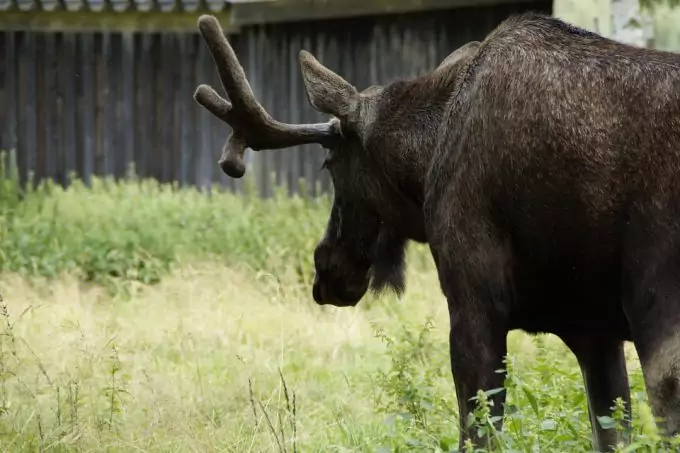
The home range is where a moose will travel during the year. This can be across several square miles. These areas are likely only to have trails that go to and from the core areas.
The core areas are much smaller, and possess sources of food and water, and are the locations where you’ll spot concentrated populations of moose. In order to find these areas, you’re going to have to be willing to put a lot of mileage on those boots, because you’re going to be walking for a long time before you find them.
Moose seasonal habits
In looking for moose, you’ll have an easier time of it if you know exactly what their habits are throughout the year. This makes it easier to predict what they’ll do during a certain time of the year so that you’ll know where to look for them. They’re usually found in areas with forests and shrubs, and tend to avoid the open areas of the tundra where they are prone to predators. They use the trees to hide their large bodies, especially when they’re at rest. They rarely move to mountainous areas that are 5,000 feet above sea level.
During the summer, moose eat herbs, grasses, and broad leaves from May until September. They can also be seen in open meadows and near lakes where they eat aquatic plants. Because of the heat during these months, moose will frequent bodies of water in order to keep themselves hydrated. In the fall, usually late August or early September, they start to change their diet because of the rutting season.
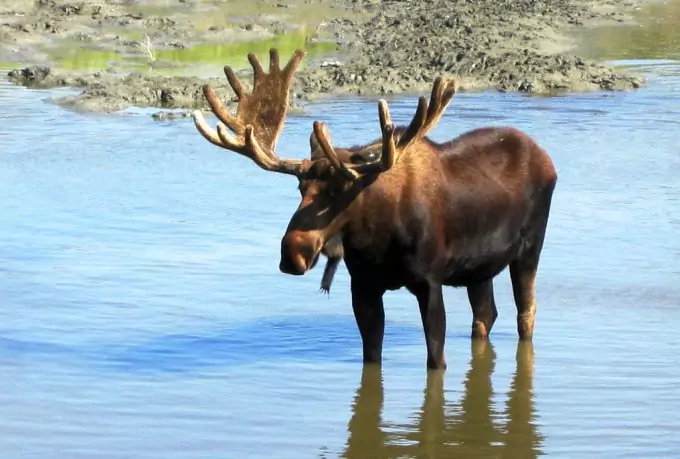
They’ll start to eat the woody browse of willow, aspen, poplar and birch. They’ll start in search of a mate, and it’s this movement that makes it the easiest for hunters to find them.
In early winter, moose can be found in areas where they usually rut, eating on low shrubs before the snow falls. Once it does, they move to the valley areas and start eating on taller shrubs that grow around rivers and creeks. Once the snow has melted and spring arrives, the diet shifts back to its usual leaves and herbaceous plants as soon as they start growing. Migrating moose start to calf and will move to areas where it is safer for them to do so.
Some moose tend to be continued residents of specific areas from year to year, and will stay within a five-mile square until they die. Other moose are more migratory, and will travel as far as 100 miles as the seasons change. What makes these moose different from each other, no one really knows, so it can be difficult to predict which kind of moose you’ll find in a specific area the first time you go hunting. Over time, however, you’ll be able to tell which moose continue to frequent the area.
Making use of the area
When it comes to moose hunting, you don’t want to end up spreading yourself too thin. Before you go out hunting, you should take a look at the area that you’ll be in using Google Earth. That way, you know the kind of terrain that you’ll be experiencing. It will also help you to plot out the best areas to start looking and make it easier for you to find what you’re looking for. Get the advice of some other seasoned hunters beforehand to know where you should start looking and mapping out your key areas.
[the_ad_placement id=”in-text-2-type-r”]After you’ve mapped it out, it can be better if you don’t go alone. Having one or two people with you to help you scope out the core areas where you’re most likely to find moose. They can also help you to find droppings, tracks in the dirt, and any rubs on trees that indicate that moose have been through the area and are likely to return here.
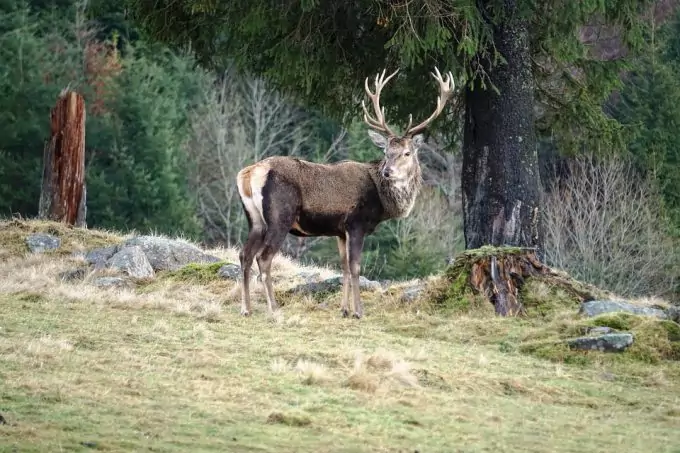
As long as they aren’t disturbed, moose return to the same areas year after year without fail. If you don’t happen to see one when you get there, there’s no reason to leave. Remaining in the area will bring a few across your path eventually, so exercise patience. When you do find these signs, be sure to mark them on your map for future reference. It’s best to do this prior to the prime hunting season.
Attracting the moose
You shouldn’t be against using everything that you can to your advantage. Using a moose call is a sure way to bring the numbers nearby, making it easier for you to target them. A birch bark moose call is your best bet, as it simulates the grunts of a male moose. Not only will this bring about the males, but the females may come as well, especially if it’s rutting season. The birch bark call is also easy for anyone to use, so there are no special talents required.
Practice with it beforehand will help you perfect the sound that you make and guarantee that you’ll bring one or even two moose to your location. There are three distinct calls that can be used to attract moose:
- the pre-rut bull “gluck” sound; this should be used in early September
- the bull challenge “mu-wah” sound; this should be used in mid-September
- the cow call, which is a nasal melodic whine; this should be used in late September
Another way to attract moose is to use an old scapula bone to rake against trees. This simulates the sound of a bull rubbing his antlers, which they sometimes do to mark their territory. The sound will attract more males as they come to investigate what the sound is.
Another method you can use to bring moose closer is to use a decoy. It works better than you may think. They’re just as easily fooled as geese. A cow moose decoy can be used to get the attention of a male. The best times to use this when there is a bull moose out in the open and you want it focusing on the decoy instead of you.
How to scout for moose
When you’re hunting for moose in the mountains, pick one spot that has a good panoramic view of the hillside that you are on. This will make it easier for you to scan your eyes and spot any movement that there might be. Look for movement, dark shapes, or white spots, as you’ll rarely ever get a completely clear view of an entire moose. If you’re using binoculars, don’t move them around to scan; keep them steady in one place, possibly with the help of a tripod, and scan with your eyes instead.
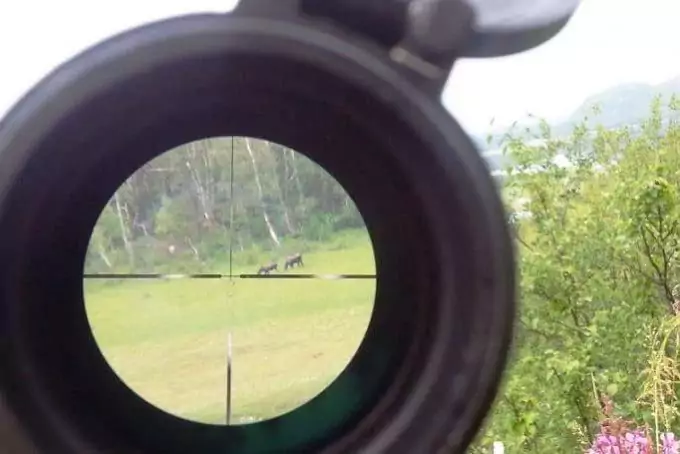
Then find a new location to focus your attentions on. You should be glassing all of the time, except when you need to rest your eyes. You don’t want to miss any opportunity to get a moose in your sights. You should also listen out for mating grunts, breaking branches, and antlers being rubbed up against trees.
Floating is another methods that hunters use, as moose don’t expect predators to approach from the waters. Using a canoe or a raft, float silently down rivers or creeks. You’re likely to spot a moose eating some vegetation or taking a long drink, providing you with excellent opportunities to take them out.
What to wear
What you wear makes all the difference in the world when it comes to moose hunting. You want to be as invisible as possible so that they’re not aware of your presence. Wear clothing that makes as little noise as possible, but still keeps you warm while being breathable.
You’re going to want to go with fleece or wool clothing. Look for outerwear that has great camouflage patterns. You don’t want to stick out like a sore thumb, or else the moose aren’t going to return to the area.
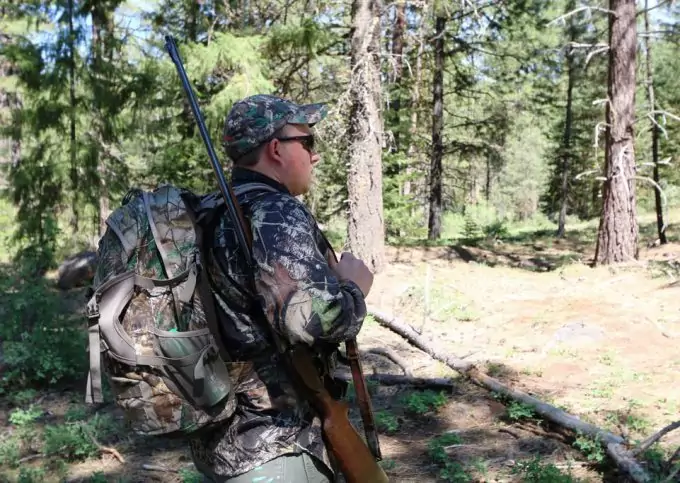
It should also be waterproof, as you’ll be hiking through all kinds of terrain and the weather can change on you at any moment. Invest in a good pair of hiking boots that will keep your feet warm and dry, as well as a good pair of hiking socks to wick away moisture.
See also: Best Hunting Boots: Get The Ideal And Most Comfortable Hunting Shoes
It also pays to know where to watch them from. Moose can pick you out as far as a quarter mile away if you’re out in the open, so try to break your outline by staying below skylines, and sitting near stumps or trees. If you don’t look like a human, then they’re not likely to pay you any mind.
Staying safe during hunting
As with all hunting expeditions, always practice safe gun methods to avoid the risk of injury. This is especially important if you’re out hunting by yourself, as there’s very little you can do to get help when you’re out in the middle of nowhere.
Bring water with you to stay hydrated. The long trek to these core areas can take a lot out of you, and there’s no reason you should succumb to dehydration before you’ve even bagged a good kill. Carry your water in a refillable container, as well as some purification tablets if you really need to resort to drinking from natural sources of water. For guidelines on how to choose the best purification tablets to use, see our earlier article tackling this topic.
When you’re out hunting moose always keep bear safety in mind. They frequent the same feeding areas that moose congregate in, as moose are their prey, so it pays to know how to deal with them if they ever cross your path.
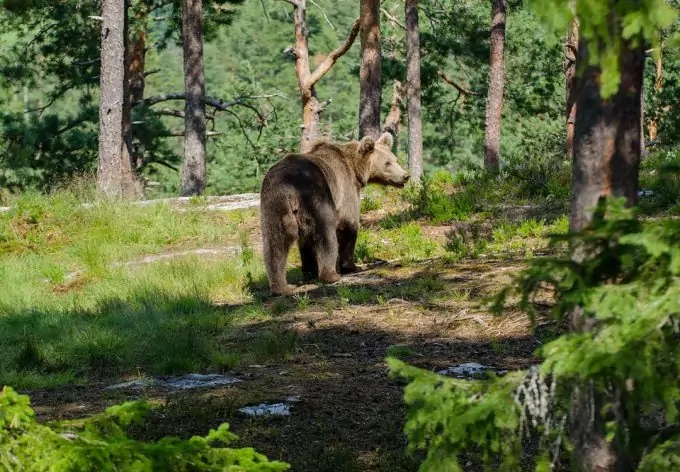
Although getting close to moose can be quite an exhilarating experience, it pays to know when to back off. Look for signs of an angry moose, such as the ears being flattered, and the hair along the neck and back standing on end. The rolling back of their eyes also indicated that the moose isn’t happy, and you should back off before they resort to taking actions against you.
It’s common sense to tell someone where you are going, and to leave them with a map of the area that you’ll be in. Tell them the time you expect to return so that on the off chance that you don’t, they’ll know to come looking for you.
After the kill
If you haven’t learned by now, moose are extremely large creatures, so it’s important to keep in mind how far you’ll be hiking and if you’ll choose to go alone. After the kill, you’ll have at least 400 to 700 pounds of meat to carry back, as well as 65 pounds of antlers.
[the_ad_placement id=”in-text-3-type-r”]That can be a lot for one person to carry, especially after hiking all those miles to those key core areas. Experienced moose hunters will say that you should never kill a moose that is more than a mile from where your vehicle is. You’ll also have to bring several backpacks or bags to transport all that meat, so you’re definitely in for the long haul.
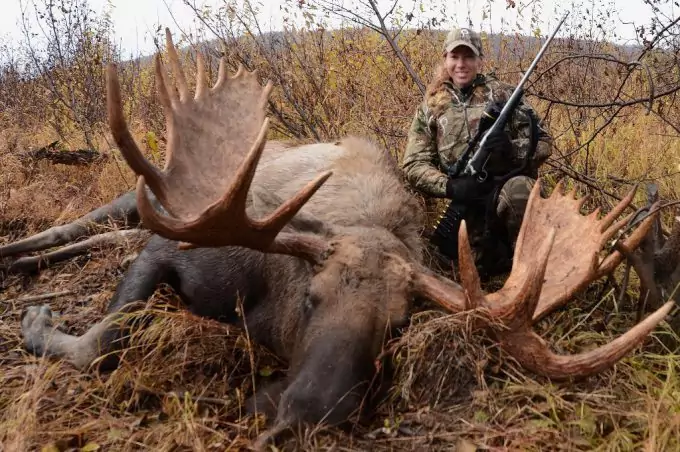
When it comes to moose hunting tips, they’re adaptable for anyone’s use. It helps to test them out to see what works best for you, as not all of them are going to prove successful. Doing some pre-season scouting will help you plan and develop an effective strategy that will work to your advantage, allowing you to take down these large animals much more easily.
When in doubt, consult a few experts in the field to see which tips and tricks have proven to be successful, and they may even have some secrets that haven’t been listed here.
Do check out our article featuring tips on elk hunting for more options.


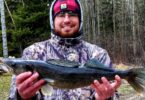
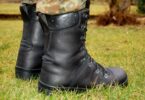

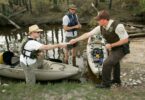
One tip is that many times a male will drive a female/calf away from any confining first before he turns out. So if you are after a rack, you must have patience.
Then again if it is either sex, you may miss your chance at a good cow and not see a moose for one more week.
HI Shane,
That is good stuff and thank you for sharing these tips.
Andrew
Expect the unexpected. It works when hunting other game so it is probably worth using for moose also. If you shoot a moose and it runs a couple hundred yards into the bush, it will be a long way back out. Use your rope with your come along to drag the moose into the shallow water.
Thank you for the tip Michael. Meese don’t go down easily and it is always advisable to have a rope handy as well as a bait to lure them out.